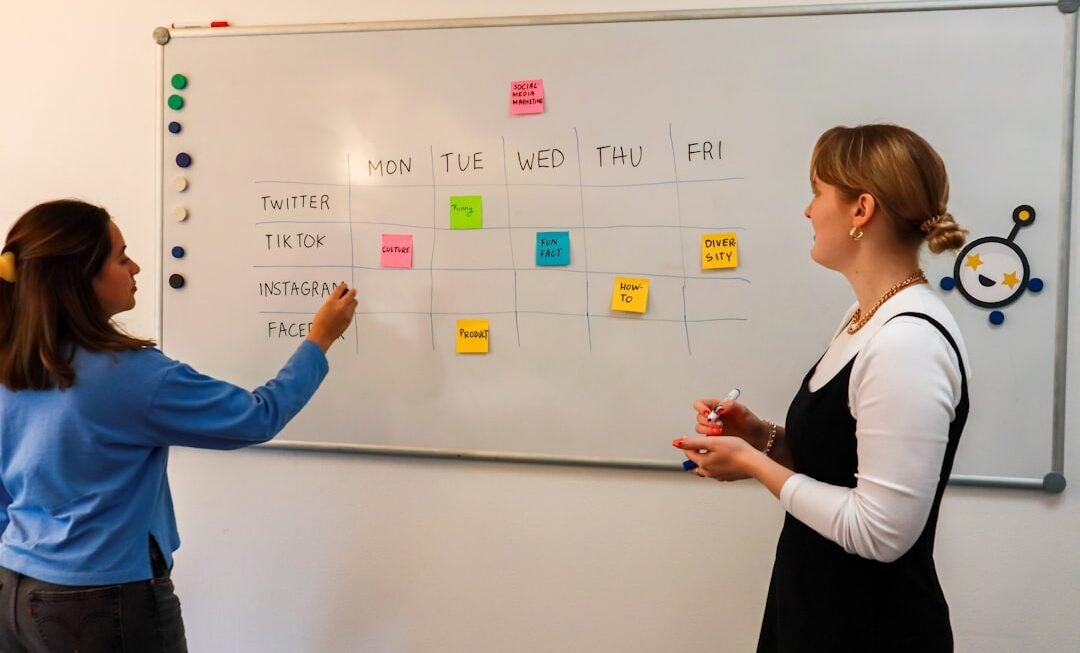In recent years, the advent of artificial intelligence has significantly transformed the landscape of language translation and communication. The rise of real-time translation tools has made it possible for individuals and businesses to communicate across linguistic boundaries with unprecedented ease. This technological evolution is not merely a trend; it represents a fundamental shift in how we interact on a global scale.
With the proliferation of smartphones and internet connectivity, AI-driven translation applications have become accessible to millions, enabling seamless conversations between speakers of different languages. This accessibility has fostered a more interconnected world, where geographical and linguistic barriers are increasingly diminished. The development of sophisticated algorithms and machine learning models has propelled real-time translation into the mainstream.
Companies like Google, Microsoft, and various startups have invested heavily in natural language processing (NLP) technologies, which allow machines to understand and generate human language with remarkable accuracy. These advancements have led to the creation of applications that can translate spoken language in real time, facilitating conversations that were once hindered by language differences. As a result, the demand for effective communication tools has surged, prompting further innovation in AI-driven translation solutions.
Key Takeaways
- Real-time translation and communication with AI is on the rise, revolutionizing language translation and breaking down communication barriers.
- AI technology offers numerous benefits for real-time translation, including increased efficiency, accuracy, and accessibility.
- Overcoming language barriers with AI technology can lead to enhanced cross-cultural understanding and improved global business opportunities.
- The future of language translation is heavily impacted by AI, with the potential to enhance communication and break down barriers.
- While there are ethical implications and challenges associated with AI-powered translation, individuals and businesses can leverage AI for real-time translation and communication to improve global interactions.
How AI is Revolutionizing Language Translation
Enhanced Translation Accuracy
For instance, Google’s Translate service has evolved from a basic word-for-word translator to a sophisticated tool capable of understanding context and providing more accurate translations. Moreover, AI’s ability to continuously learn from user interactions enhances its performance over time. As users engage with translation tools, the AI system collects data on common phrases, regional dialects, and user preferences, refining its algorithms to improve accuracy.
Iterative Learning and Adaptation
This iterative learning process means that AI-powered translation tools are not static; they evolve alongside language itself. For example, during significant global events or cultural shifts, these systems can quickly adapt to new terminology and expressions, ensuring that users receive relevant and timely translations.
The Future of Language Translation
As AI continues to advance, we can expect even more sophisticated language translation capabilities. With the ability to learn and adapt at an unprecedented scale, AI-powered translation tools are poised to revolutionize the way we communicate across languages and cultures.
The Benefits of Real-Time Translation and Communication with AI
The benefits of real-time translation and communication powered by AI are manifold. One of the most significant advantages is the ability to facilitate immediate understanding between individuals who speak different languages. In situations where time is of the essence—such as medical emergencies or business negotiations—real-time translation can be a lifesaver.
For instance, a doctor in a multicultural city can use an AI translation app to communicate effectively with patients who speak various languages, ensuring that critical information is conveyed accurately and promptly. Additionally, real-time translation fosters inclusivity in social and professional settings. In multinational companies, employees from diverse linguistic backgrounds can collaborate more effectively when they can communicate in their preferred languages without fear of misunderstanding.
This inclusivity not only enhances teamwork but also promotes a culture of respect and appreciation for diversity. Furthermore, educational institutions are increasingly adopting AI-driven translation tools to support students who are non-native speakers, allowing them to participate fully in classroom discussions and activities.
Overcoming Language Barriers with AI Technology
AI technology plays a pivotal role in overcoming language barriers that have historically hindered communication between cultures. By providing instant translations, AI tools empower individuals to engage in conversations that would otherwise be impossible due to language differences. For example, during international conferences or diplomatic meetings, real-time translation devices enable participants to express their ideas and opinions without the constraints of language limitations.
This capability not only enhances dialogue but also fosters mutual understanding among diverse groups. Moreover, AI’s ability to analyze and interpret cultural context adds another layer of depth to communication. Language is not merely a collection of words; it is deeply intertwined with culture, history, and social norms.
Advanced AI systems can recognize these subtleties, allowing for translations that respect cultural nuances. For instance, when translating marketing materials for a global audience, AI can adapt messages to resonate with local customs and values, ensuring that the intended message is conveyed effectively without causing offense.
The Role of AI in Breaking Down Communication Barriers
AI serves as a powerful tool for breaking down communication barriers that have long existed in our increasingly globalized world. By enabling real-time translation across various platforms—be it video calls, messaging apps, or social media—AI facilitates interactions that transcend linguistic divides. This capability is particularly valuable in an era where remote work and virtual collaboration have become the norm.
Teams spread across different countries can communicate effortlessly, sharing ideas and feedback without the hindrance of language differences. Furthermore, AI-driven communication tools are not limited to text-based interactions; they also encompass voice recognition and synthesis technologies. Applications like Microsoft Translator and Google Meet now offer features that allow users to speak in their native languages while others listen in their preferred tongues.
This functionality transforms meetings into inclusive environments where everyone can contribute meaningfully, regardless of their linguistic background. The result is a more collaborative atmosphere that encourages innovation and creativity.
Real-Time Translation and Communication: A Game-Changer for Global Business
Enhancing Customer Experience
E-commerce platforms, for instance, can utilize real-time translation to provide customer support in multiple languages, enhancing user experience and satisfaction. This capability enables businesses to cater to a broader customer base, increasing their global reach and competitiveness.
Streamlining Business Negotiations
Moreover, the ability to conduct negotiations in real-time without language barriers can significantly impact business outcomes. Imagine a scenario where a company based in Japan is negotiating a deal with a firm in Brazil; real-time translation allows both parties to articulate their terms clearly and understand each other’s perspectives without miscommunication.
Building Trust and Expediting Negotiations
This capability not only expedites the negotiation process but also builds trust between partners by demonstrating a commitment to effective communication. By leveraging AI-powered real-time translation, businesses can foster stronger relationships, drive growth, and stay ahead in today’s competitive global market.
The Future of Language Translation: AI’s Impact on Communication
As we look toward the future, the impact of AI on language translation and communication is poised to grow even more profound. With advancements in machine learning and natural language processing continuing at a rapid pace, we can expect even greater accuracy and fluency in translations. Future iterations of AI-powered translation tools may incorporate emotional intelligence, allowing them to detect tone and sentiment in conversations—an essential aspect of effective communication that goes beyond mere words.
Additionally, as virtual reality (VR) and augmented reality (AR) technologies gain traction, we may see innovative applications of real-time translation within immersive environments. Imagine attending a virtual conference where participants from around the world interact seamlessly through translated avatars or holograms speaking in their native languages. Such developments could redefine how we experience global events and foster connections across cultures in ways previously unimaginable.
Real-Time Translation and Communication: Enhancing Cross-Cultural Understanding
Real-time translation technology not only facilitates communication but also enhances cross-cultural understanding by allowing individuals to engage with diverse perspectives directly. When people can communicate without language barriers, they are more likely to share their experiences, beliefs, and values openly. This exchange fosters empathy and appreciation for different cultures, ultimately contributing to a more harmonious global society.
For example, educational programs that incorporate real-time translation tools can expose students to various cultures through direct interaction with peers from different backgrounds. Such experiences encourage students to develop cultural competence—a crucial skill in today’s interconnected world. By understanding different viewpoints and ways of life through direct communication, individuals can cultivate respect for diversity and work towards building inclusive communities.
The Ethical Implications of AI-Powered Translation and Communication
While the benefits of AI-powered translation are substantial, ethical implications must also be considered. One major concern is the potential for bias in machine learning algorithms used for translation. If training data predominantly reflects certain cultural perspectives or linguistic nuances while neglecting others, the resulting translations may perpetuate stereotypes or misrepresent marginalized voices.
It is crucial for developers to ensure that their datasets are diverse and representative to mitigate these risks. Another ethical consideration involves privacy concerns related to data collection during real-time translations. Many applications require access to users’ conversations for improved accuracy; however, this raises questions about data security and user consent.
Companies must prioritize transparency regarding how user data is utilized while implementing robust security measures to protect sensitive information from unauthorized access.
Challenges and Limitations of Real-Time Translation and Communication with AI
Despite the remarkable advancements in AI-driven translation technology, challenges remain that hinder its effectiveness in certain contexts. One significant limitation is the difficulty in translating idiomatic expressions or culturally specific references accurately. While AI systems have improved significantly in understanding context, they may still struggle with phrases that do not have direct equivalents in other languages.
This limitation can lead to misunderstandings or misinterpretations during critical conversations. Additionally, technical issues such as connectivity problems or software glitches can disrupt real-time communication efforts. In high-stakes situations—such as medical emergencies or international negotiations—any delay or error in translation could have serious consequences.
Therefore, while AI offers powerful tools for enhancing communication across languages, it is essential for users to remain aware of these limitations and approach translations with caution.
How Individuals and Businesses Can Leverage AI for Real-Time Translation and Communication
Individuals and businesses alike can harness the power of AI for real-time translation and communication by integrating these technologies into their daily operations. For individuals traveling abroad or engaging with international friends or colleagues, mobile applications like Google Translate or iTranslate provide instant translations at their fingertips. These tools can facilitate everyday interactions—from ordering food at a restaurant to asking for directions—making travel experiences more enjoyable and less stressful.
For businesses operating on a global scale, investing in AI-driven translation solutions can enhance customer engagement and streamline operations. Companies can implement chatbots equipped with real-time translation capabilities on their websites or customer service platforms to assist clients from different linguistic backgrounds effectively. By providing support in multiple languages without requiring extensive human resources, businesses can improve customer satisfaction while expanding their reach into new markets.
In conclusion, the rise of real-time translation powered by AI represents a transformative shift in how we communicate across linguistic boundaries. As technology continues to evolve, its potential to enhance understanding and collaboration among diverse cultures will only grow stronger.












